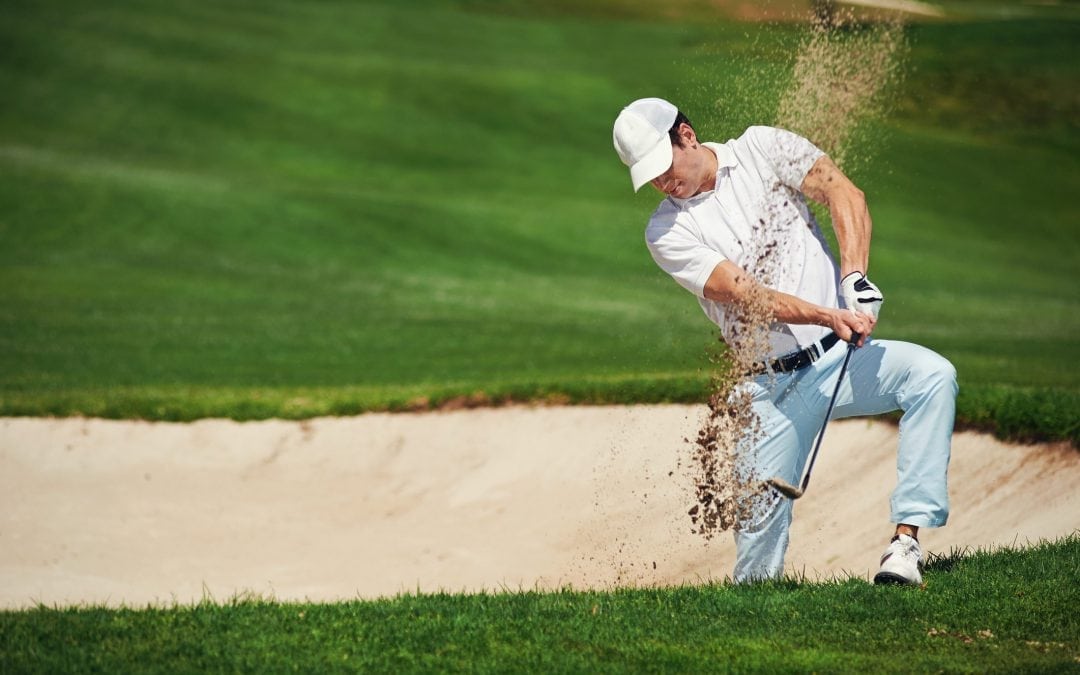One of the most perplexing problems for both junior golfers and tour pros is facing golf slumps. It is a challenge every serious player will likely face at some time. What are they, how do we get into them, and most importantly, how do we recover from them?
What are golf slumps?
Slumps are sustained periods of time when both your physical and mental skills are at a level considerably less than your average. With prolonged golf slumps, score averages rise, frustrations increase, and there is a seemingly endless struggle to play well. Slumps can leave you feeling hopeless, angry, tired, lost, and in extreme cases, depressed, lethargic or moody. Slumps can begin with either a drop in your physical skills or a drop in mental skills. Whatever the origin, the true slump ultimately involves greatly reduced mental skills that include but are not limited to such things as low confidence, elevated emotions, and increased tension.
Slumps don’t exist…We create them in our minds…you are in a slump when you think you are…the deeper you think it is- the more deeply you believe in it- the harder it will be to get out of it.
-Timothy Gallwey in his book “The Inner Game of Golf.”
Rather, these are the golf slumps that can take hold of your entire game for weeks, months, and sometimes years because of numerous physical and mental factors related to the way you think, play, and perceive yourself and your game.
How do we get into slumps?
Slumps can start in numerous, inconspicuous ways. In fact many of the factors that lead a golfer’s game toward its’ natural fluctuations are the very factors that can trigger a slump. The total affect these factors have on your game depends largely on your mental well-being at the time and the number of factors you encounter at any one time. The most common “physical” and “mental” factors that contribute to slumps on tour are described here. Please keep in mind that numerous factors usually contribute simultaneously to the slump and they do inter-relate.
Physical factors that can trigger a slump
Injury – Playing with pain and injury can very often force a player to alter their fundamentals to ease the pain. Pain and injury can lead to mental factors such as elevated emotions and poor concentration.
Swing Changes – Excessive use of videos, consulting with numerous teachers, and seeking advice of too many others can often accelerate a player into playing “golf swing” instead of “playing golf”. Many golf slumps start with swing changes that were initiated for the wrong reasons. You may try to change your swing when mental weaknesses were the reason your swing broke down under pressure. You may want to make your swing look better on video. You may want to change your swing to move to the next level, even though you are playing well now. Excessive swing changes can lead to mental factors such as reduced confidence and “left-brained” or mechanical play.
Equipment Changes – Pursuit of bonus pools, larger contracts, keeping up with technological changes, or simply hoping the “right” club or putter will “solve all the problems” can lead a player into inappropriate and/or excessive equipment changes which can greatly reduce confidence in equipment. This creates mental problems including reduced performance confidence and less commitment to clubs, targets and types of shots, as well as, inability to commit to lines and speeds of putts.
Over-Practice– Every player can reach a level of over-practice, at which point skills are reduced rather than improved due to several mental and physical factors including: greater mental and physical fatigue; becoming more injury prone; reduced patience with mistakes; elevated expectations; and probable neglect of other important areas of your life. Over-practice can be brought on by strong work ethic, high drive, fear of failure, guilt, a need for distraction from other problems, and a need to prove something to others or yourself.
Under-Practice – Difficulty finding time or motivation to work on various and specific aspects of the game and poorly organized practice can lead to under-practice and reduced skills. Lifestyle changes such as new demands can lead to under-practice. Under-practice can then affect mental factors such as reduced performance, confidence, and negative expectations.
Mental Factors that can Trigger Golf Slumps
Fear of Failure – Fear of failure can lead to physical factors such as steering or guiding the club rather than swinging freely.
Burn Out – Golfers over-play for any number of reasons. All can lead to mental fatigue which shows up as greatly reduced patience and inability to visualize shots and see lines for putts.
Lack of Clear Goals – Without clear, attainable, and challenging goals you can easily lose direction and purpose in your practice and play. Slumps in golf are common after long-held goals are finally achieved and not replaced with new goals. Golf Slumps are also common with players who hold only long-range goals without the intermediary goals to guide them.
Playing golf for the wrong reasons – When the reasons for playing golf, such as for the love of the game or competition get lost, unhealthy ones, such as; to pay the bills, or “because I have to” replaces them, slumps are prone to follow.
How to Prevent and Recover from a Slump
Give proper attention to pain and injury – If you have been playing with pain or injury, be certain that you take all possible steps to ensure healing or reduction of pain using diet, stretching, and exercises. In any case, you may need to be prepared to replace a lot of your physical practice with good imagery training.
Commit to my fundamentals for three months – If you have been searching and tinkering with your swing or putting stroke, settle as quickly as possible on fundamentals to which you can commit without any change for the next three months. Seek assistance to whom you trust and a teacher that understands your swing, and will be able to help you correct and maximize your game rather than completely re-build.
Commit to my equipment for three months – If you have been experimenting and tinkering with your putters, clubs, shafts, heads, set-ups, etc. choose all to which you can commit without changing for the next three months.
Organize my practice – If you have been practicing without a real plan or purpose, start organizing all of your practice time. Set a specific goal you want to accomplish for the day then decide on the drill, game, or lesson that will allow you to accomplish this goal.
Mental Steps
Ensure healthy attitude and lifestyle – Depending on the progression of your slump, you should first determine if there are some issues you need to resolve in your personal life. Assess your issues with your relationship, your family, and your friends. This isn’t easy, but is one of the most common contributors to golf slumps.
Ensure personal balance – Be certain that you do not spend more than 70% of time practicing, playing, or thinking about golf. Make sure you are giving enough quality time to all five important areas of your life. Try to mentally be where you physically are at in each given moment.
Change mental habits to think more like a champion – You will benefit from taking time to become familiar with, or reminding yourself of how champions think in regards to competitive golf. Champions accept that golf slumps are a natural part of their games and they take steps to understand them rather than fearing and fighting them. Champions play in the moment, resisting habits of looking ahead or behind in the round and trying to make every shot of equal importance.
Slumps are experienced to some degree by all golfers. It is important that you accept them as a natural part of the game of golf, yet be prepared to intercept them and focus on the physical and mental factors that are involved. Take an active role in strengthening these factors, like champions, you can use the golf slumps as a tool to get yourself to the “next level” rather than seeking out and applying “quick fixes” that allow you to fall into similar patterns. In the process, you will come to know yourself better as a golfer and a person and you will become a stronger person both on and off the course.
If your struggles have continued despite trying seemingly everything, allow us to help you. Our coaching system has been used by nearly 400 Tour Pros and resulted in 31 Major Championships. Contact us today to find out how you personally can overcome your slump, and come out a better player than ever before.


